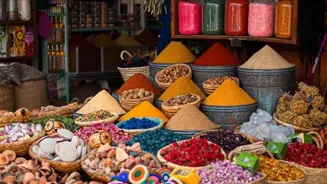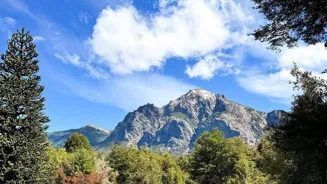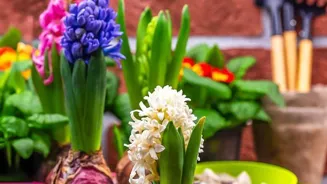Embark on a journey to explore India's iconic landmarks! Discover the rich history, architectural marvels, and spiritual significance of these must-visit destinations. From the ethereal Taj Mahal to the majestic
Mehrangarh Fort, each landmark offers a unique glimpse into India's past. Join us as we delve into the heart of India and uncover the stories etched in marble, gold,
Planning a trip can be exciting, but deciding where to go and what to see can feel a bit much. India, with its rich history and diverse culture, boasts a plethora of landmarks that are must-visits.
To help you narrow down your choices, we've curated a list of 10 iconic landmarks that should definitely feature on your travel itinerary. These spots offer a glimpse into India's past, architectural marvels, and spiritual significance, promising an unforgettable journey.
So, pack your bags and get ready to explore the heart of India!
The Taj Mahal, Agra:
No trip to India is complete without witnessing the ethereal beauty of the Taj Mahal. This ivory-white marble mausoleum, built by Mughal emperor Shah Jahan in memory of his beloved wife Mumtaz Mahal, is a symbol of eternal love.
Located in Agra, Uttar Pradesh, the Taj Mahal attracts millions of visitors every year with its stunning architecture and intricate details. The best time to visit is early morning, when the sun's rays gently illuminate the monument, casting a magical glow.
A visit is more than just ticking off a landmark; its witnessing a love story etched in marble. Consider hiring a local guide to learn about the history, the Mughal dynasty, and the craftsmanship that went into creating this wonder.
Remember to carry your camera to capture the mesmerizing reflections in the Yamuna River. And of course, be mindful of the crowds, especially during peak season. Dress modestly as it is a revered place, and wear comfortable shoes, as you'll be doing a fair bit of walking. This is truly a spectacle!
The Golden Temple, Amritsar:
The Golden Temple, also known as Sri Harmandir Sahib, is the holiest shrine for Sikhs. Located in Amritsar, Punjab, this shimmering gold structure is a symbol of peace, equality, and spirituality.
The temple complex includes a community kitchen (langar) that serves free meals to all visitors, regardless of their faith or background. The serene atmosphere and the selfless service offered here make it a truly humbling experience.
Millions of people visit every year and it is always busy so plan accordingly.
Plan your visit early in the morning to witness the Palki ceremony, where the Guru Granth Sahib (the holy scripture) is carried to its resting place.
Take a dip in the Amrit Sarovar, the holy pool surrounding the temple, believed to have healing properties. Remember to cover your head as a sign of respect and remove your shoes before entering the temple complex.
The Golden Temple is not just a place of worship; it's a testament to the spirit of humanity. The golden hue reflecting in the water creates a magical scene.
Qutub Minar, Delhi:
Standing tall in the heart of Delhi, the Qutub Minar is a towering minaret that dates back to the 12th century. This UNESCO World Heritage Site is a remarkable example of Indo-Islamic architecture.
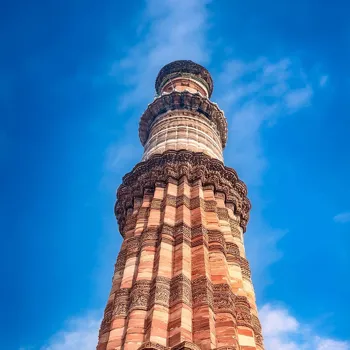
The Qutub Minar complex also houses other historical structures, including the Quwwat-ul-Islam Mosque and the Iron Pillar, which has stood rust-free for over 1600 years. Explore the history inside; each corner tells a story!
Make sure to wear comfortable shoes as you'll be walking on uneven surfaces. Consider visiting during the cooler months (October to March) to avoid the scorching Delhi heat. Hire a local guide to narrate the history and architectural nuances of the complex.
Take a walk around the complex; the ruins will take you back in time. The red sandstone structure against the blue sky makes for a striking photo opportunity.
Hawa Mahal, Jaipur:
The Hawa Mahal, or "Palace of Winds," is an iconic landmark in Jaipur, Rajasthan. Built in the 18th century, this five-story structure features a unique honeycomb facade with numerous small windows. These windows allowed the royal ladies to observe street festivals and daily life without being seen.
The Hawa Mahal is best viewed from the street, as it presents a stunning architectural spectacle.
Climb to the top for panoramic views of the city of Jaipur. Visit early in the morning to avoid the crowds and capture the best light for photography.
Explore the small museum located inside, which showcases royal artifacts and historical information. The intricate latticework and the pink sandstone create a beautiful backdrop. The palace is located near the city market, so you can indulge in some shopping.
Victoria Memorial, Kolkata:
The Victoria Memorial is a grand marble building in Kolkata, West Bengal, dedicated to Queen Victoria of the United Kingdom. This architectural masterpiece houses a museum with a vast collection of artifacts, paintings, and sculptures that depict the history of British India.
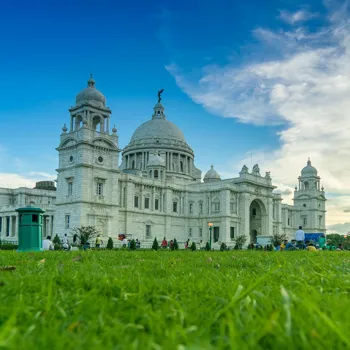
The lush gardens surrounding the memorial provide a serene escape from the bustling city. Its elegance is very interesting to view!
Take a guided tour to learn about the history of the memorial and the British Raj.
Visit during the evening to witness the sound and light show, which narrates the story of Kolkata and the memorial. Take a leisurely stroll through the gardens and soak in the peaceful atmosphere. The white marble structure is stunningly lit up at night.
The Victoria Memorial is a reminder of a bygone era.
India Gate, Delhi:
India Gate stands as a solemn tribute to the soldiers of the British Indian Army who lost their lives in World War I. Situated in the heart of Delhi, this war memorial is an iconic landmark. An eternal flame, the Amar Jawan Jyoti, burns continuously to honour the fallen soldiers.
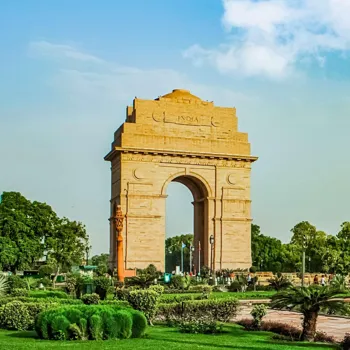
The monument's imposing structure and the verdant lawns around it make for a striking visual representation. Take a visit; it will change the way you see patriotism!
Ideal visits are in the evening as the site is filled with families partaking in picnics and enjoying the relaxed atmosphere.
Take a walk around the monument, reading the plaques commemorating the names of the soldiers. You can capture some photos of this historic landmark, but remember to be respectful. The illuminated India Gate at night provides a spectacular view.
It provides a moment of reflection on the sacrifices made for the country.
Mehrangarh Fort, Jodhpur:
An emblem of regal splendor, Mehrangarh Fort stands proudly atop a hill in Jodhpur, Rajasthan. This majestic fort, with its commanding presence, provides a breathtaking view of the 'Blue City'.
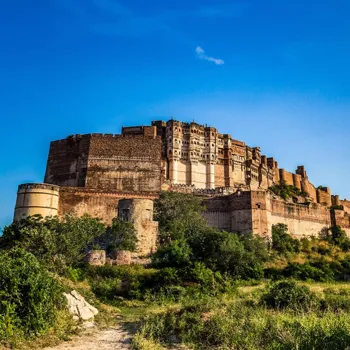
Its thick walls encircle a complex of palaces, courtyards, and museums that display a rich collection of royal artifacts. Be prepared to be transported back in time; each corner holds a chapter of history!
Start your journey early for a cooler experience.
Hire a knowledgeable local guide to lead you on a historical journey throughout the Fort's grounds. At sunset, take in the mesmerizing vista of the city from these heights. The Fort's construction in red sandstone radiates heat but is an image to behold against the setting sun.
This historic stronghold is a must for anyone interested in Rajasthan's royal past.
Mysore Palace, Mysore:
A magnificent spectacle of architectural splendor, the Mysore Palace is situated in the heart of Mysore, Karnataka. Also called the Amba Vilas Palace, it's the official residence of the Maharajas of Mysore.
Its complex architectural style is highlighted by Indo-Saracenic and Dravidian elements, covered with detailed carvings and beautiful works of art. Prepare to be transported into a world of unbelievable riches and artistic brilliance.
Time your visit to coincide with the palace's illumination in the night, turning the palace into a gold fantasy. Go on a guided tour to learn about the royal family's extensive history and the palace's architectural subtleties.
Take a stroll across the exquisitely maintained palace grounds, enjoying the peace. As an image of Mysore's rich cultural past, this amazing building must be seen.
Gateway of India, Mumbai:
An iconic landmark overlooking the Arabian Sea, the Gateway of India is located in Mumbai, Maharashtra. Built during the British Raj, this arch monument served as a symbolic ceremonial entrance to India.
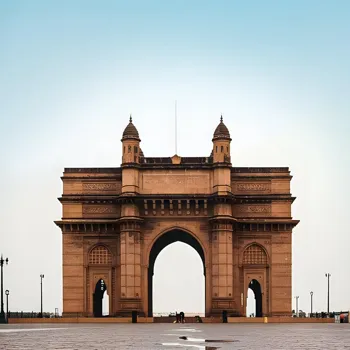
Today, it stands as a popular tourist spot, providing views of the harbor and the adjacent Taj Mahal Palace Hotel. Its architectural majesty speaks volumes about India's past, offering tourists an enduring experience.
Set sail with the ferries to Elephanta Island is one thing to do, or take a slow walk around the Gateway. Visit the vibrant street food vendors and enjoy Mumbai's culinary delights. Capture an image of this iconic monument with the sea's vastness in the background.
From this vantage point, one may view and experience the city's energy and rich history.
Khajuraho Temples, Madhya Pradesh:
Known for their elaborate sculptures, including erotic scenes, the Khajuraho Temples are located in Madhya Pradesh. These temples, built during the Chandela dynasty, are a UNESCO World Heritage Site. They represent a fusion of art, spirituality, and culture.
Their historical significance and exquisite craftsmanship make them an essential addition to any itinerary, despite their sensuous reputation.
Respect the religious importance of the temples by dressing modestly.
Explore the rich history and symbolism behind the sculptures with a well-informed professional. The temples may be visited comfortably during the cooler months.
This is a destination for anybody drawn to the beauty of ancient Indian art and architecture, which is not only about pleasure but the life cycle.

